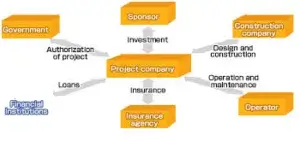Financial Modeling and Project Finance

Here's What We've Covered!
Payal works with the project finance team of a bank based in Mumbai. Her team is assigned the task of analyzing various proposals for project finance, so that the bank can decide if money needs to be lent for the project. Project Finance refers to financing of projects based on the returns generated from the project itself. The financing is generally done over a longer duration, to enable the project to start generating profits.
Whenever a project proposal is submitted to the project finance team, the project details are studied to understand the various drivers of revenues and costs i.e. variables that impact the revenue and cost line items. The project finance modeling is divided into 2 phases
– Project Setup Phase
– Revenue Generation Phase
Each phase involves modeling with different assumptions. Each phase is modeled independently by Payal’s team, though the phases are linked to each other.
In the project setup phase, the key input is the capital expenditure cost and the sources of capital for this capital expenditure. Capital can be raised through debt and/or equity. Modeling in this phase will focus forecasting the capital expenditure and what amounts of debt and equity would be required at different times during the set-up phase.
The setup time of few projects may extend beyond a couple of years. Since there is no revenue generated during this time, the interest cost on the debt undertaken cannot be repaid. This interest due is adjusted as additional loan extended by the bank. This can skew the debt to equity ratio and hence modeling care needs to be taken to ensure the ratio is not skewed on account of this additional loan. A solution could be additional equity infusion from the equity holders every year as interest is due. The team would be able to forecast the amounts of additional loan and equity and when these are required.
By completing the modeling for the setup phase, Payal’s team is ready with the total capital expenditure and the schedule of funds requirement for the project. Based on the risk assessment of the project, the team will propose an optimum mix of debt and equity, by running various scenarios through the project model.
With the funding requirements in place, the team will analyze how the debt will be serviced by the project. This will involve modeling the cash flows of the project based on the assumptions of revenues and operational costs of the project. One of the key considerations is if the company is generating enough cash flow to cover the interest and principal payment cost in each year. This metric is called the interest coverage ratio. In addition, the principal repayment of the debt will be modeled according to the terms of agreement with the lender. The profits generated after paying off all the claims will accrue to the equity holders of the project.
In each phase, the modeling will involve the completion of Income Statement, Balance Sheet and Cash Flow statements. After the financial model of the project is completed, the team will also estimate the returns from the project. The metrics used for analysis will include
• Net Present Value (NPV)
• Internal Rate of Return (IRR)
• Profitability Index (PI)
• Payback Period etc.
Sensitivity of the return metrics to changes in interest rate, debt-equity ratio etc will be analyzed. After compiling all these analyses on the basis of the financial models, the team will give its recommendations on whether the project should be funded and on what financial terms.
Resent Post
>
Emerging commerce career options in India (2026): From CA to Data Analyst
>
ACCA Opportunities You Didn’t Know About – Think Beyond Audit!
>
Which Courses After 12th Commerce With High Salary Are in Demand Worldwide?
>
How to Find ACCA Jobs Online After Qualifying: Real Portals, Tips & Career Guidance
>
Financial Modelling Classes in Hyderabad: Your Guide to the Best Institutes
Follow Us For All Updates!




